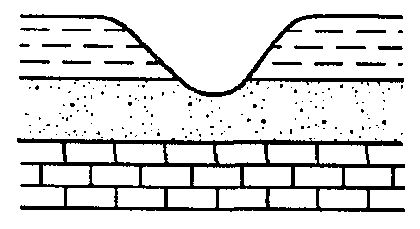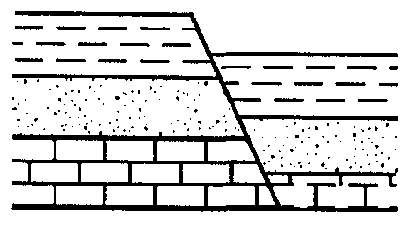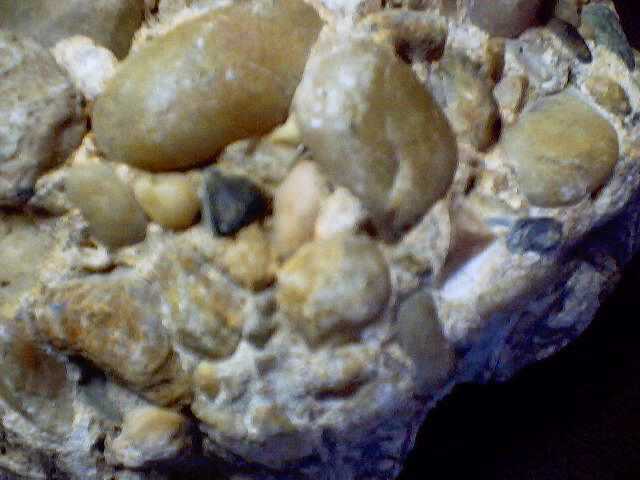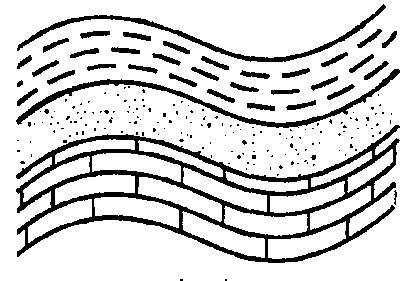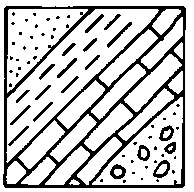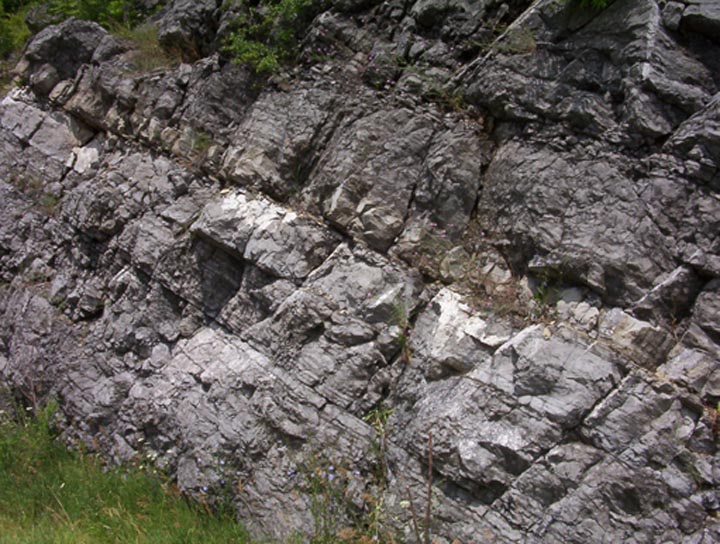Other Guidelines for figuring out a sequence:
- Sedimentary rocks are usually formed under water.
- Weathering and erosion usually happen above water (on dry land).
- Contact metamorphism shows that the rock that was changed was there first when the intrusion happened.

All three layers of rock (limestone, sandstone, shale) were made, then the volcano formed.
The fuzzy line is contact metamorphism where the hot magma "fried" the surrounding
rock and changing it to metamorphic rock (ex. the limestone was changed to marble).
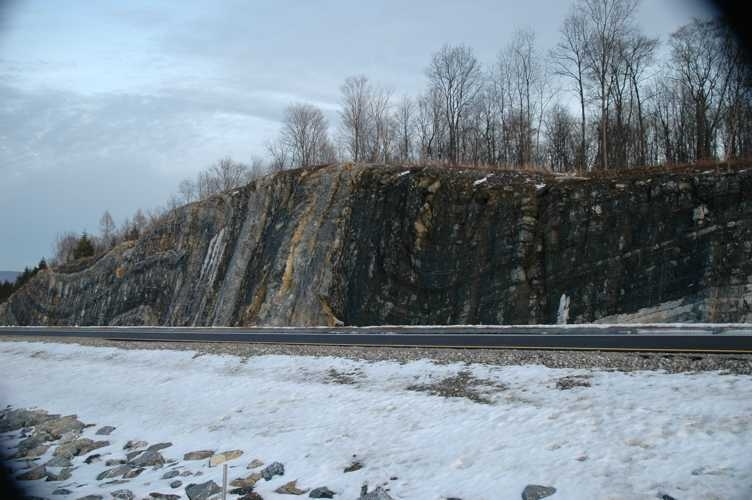
This image shows an igneous intrusion cutting through sedimentary layers. A closer examination
(not possible from this picture) would reveal contact metamorphism where the intruding igneouos
rock "cooked" the pre-existing sedimentary layers.
By the way…
How can you tell if folding has gone so far as to flip the layers over?
Clues such as graded bedding will tell if the rocks were overturned.
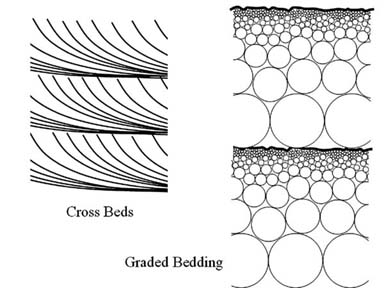 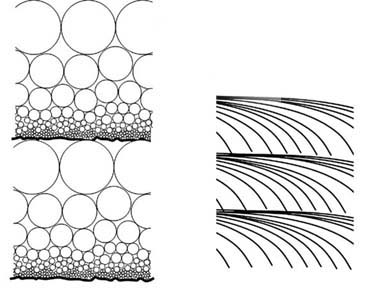
The left shows normal crossbeds and graded bedding while the right shows what they look like after being overturned.
Drawing by Phil Medina
Formation of an Unconformity
Layers are formed according to superposition.
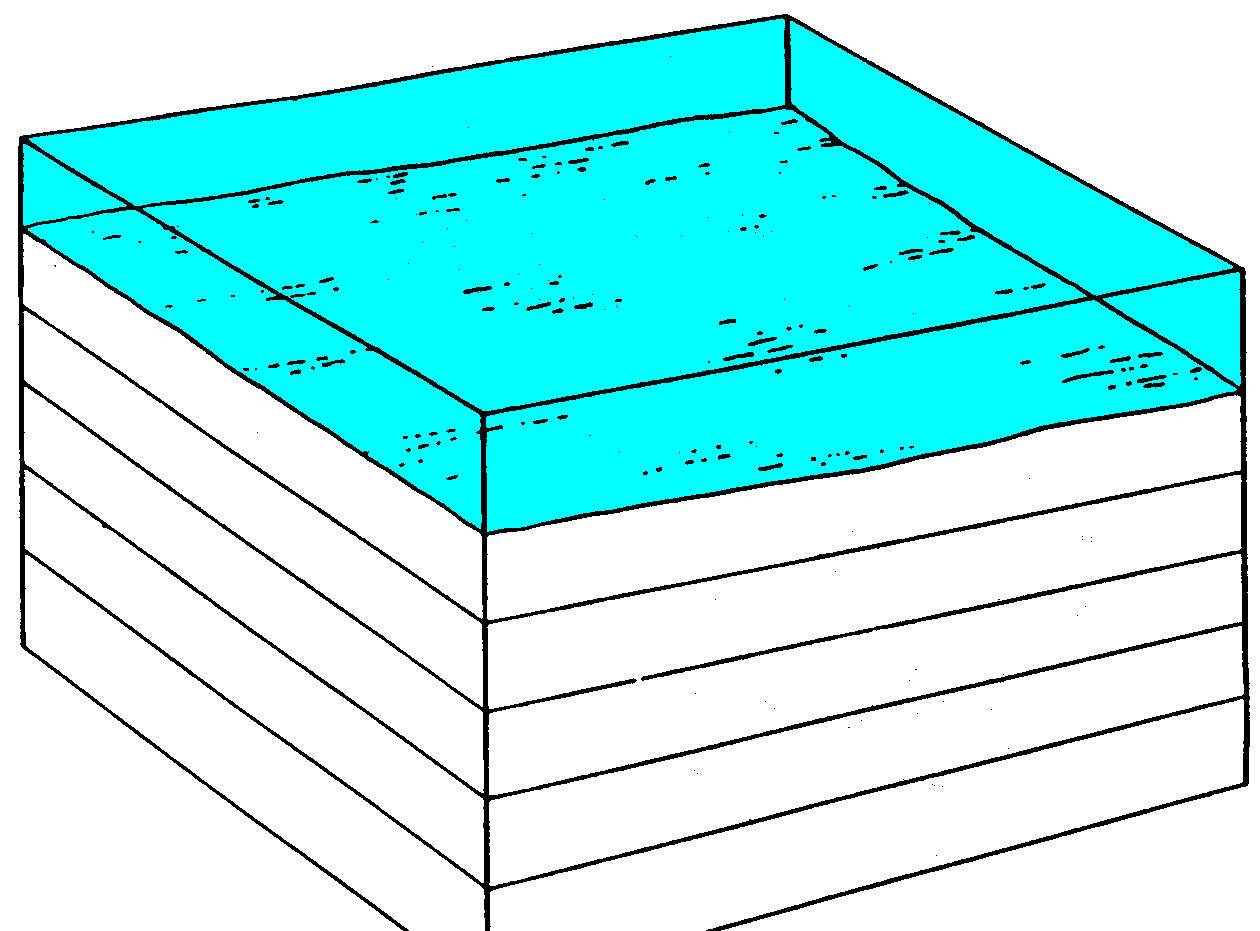
Something happens to uplift the area: folding faulting, etc.

Erosion wears away the uppermost layers
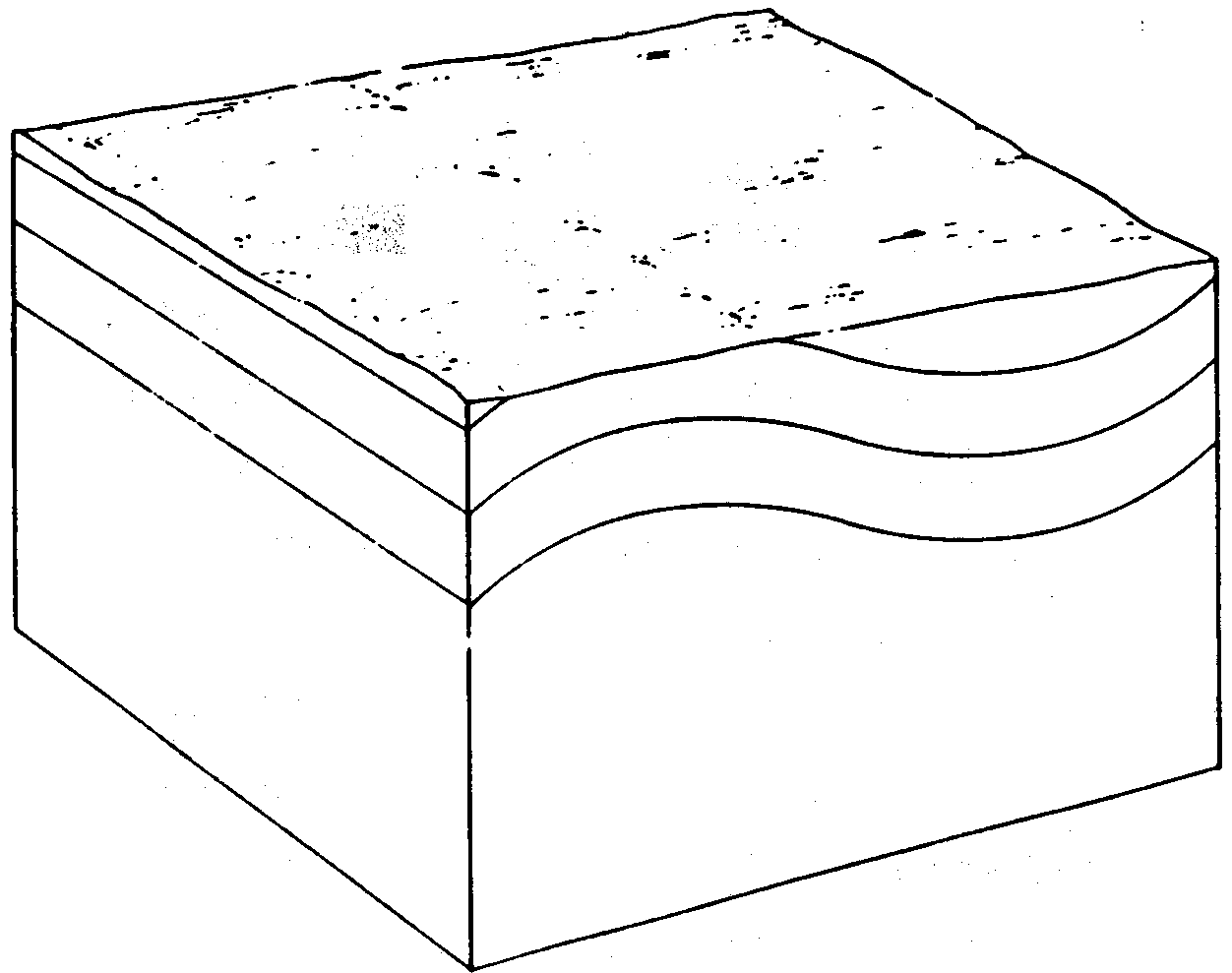
Area submerges and deposition begins again.
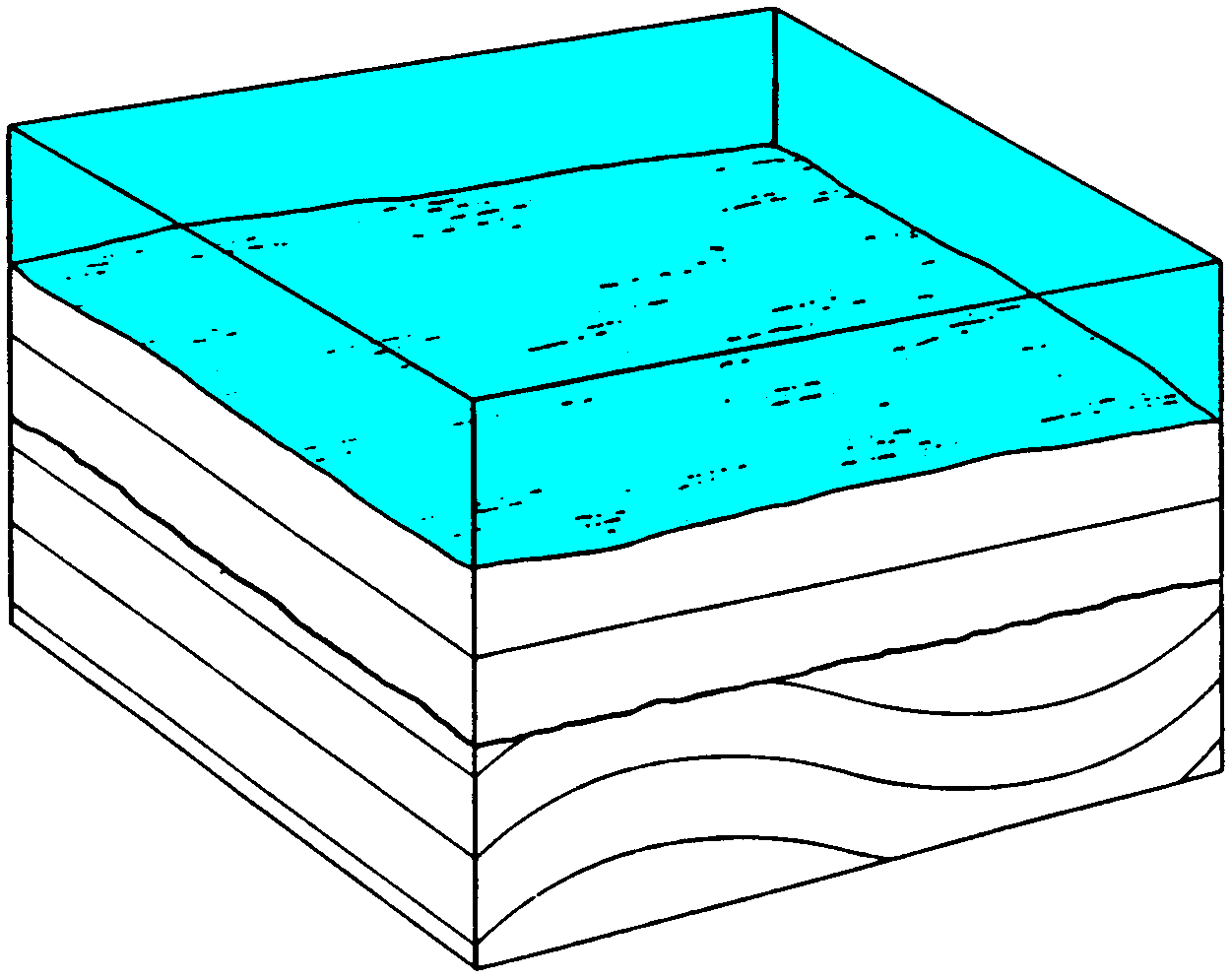
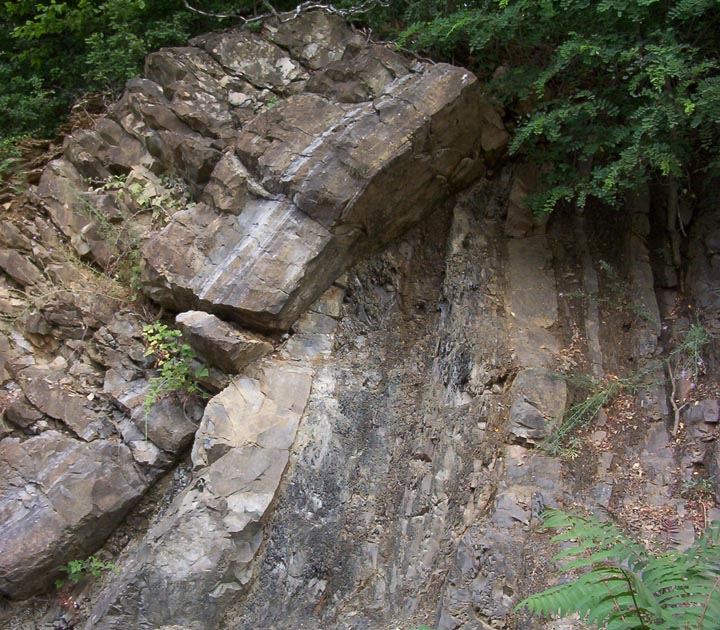
Here is an unconformity. The almost vertical layers on the bottom formed first.
They tilted a little then eroded
to make the straight cutoff (the diagonal line
going from bottom left to top right). Then the final deposit was the layers
to the top left. Photo by Phil Medina
Correlation: Matching a layer in one location with a layer formed at the same time in another location.
Correlation Techniques:
- "Walking the outcrop"- following an outcrop and mapping all the structures that it touches.
- Similar rock characteristics- layers can be matched on the basis of similar colors, compositions, an unique feature, or by the same series of rocks "sandwiching" it.
- Index fossils- a fossil that lived in a wide area but for only a short time
Good Index Fossil or Bad? |
Homo Sapiens: existed 3-5 MY
range: entire planet |
|
|
Crocodile: virtually unchanged for 200MY
range: found over most of the planet |
|
|
T. Rex: existed 68-65MYA
range: found on most continents |
|
|
Western Spotted Owl: existed for 5MY
range: found only on the W. coast USA |
|
|
Volcanic time markers - a layer of volcanic dust covering layers.
When a violent eruption of a volcano occurs it may send dust high into the atmosphere where it can spread over the entire planet. It settles out of the air and forms a layer over wide regions at the same time.
Asteroid impacts can have the same effect.
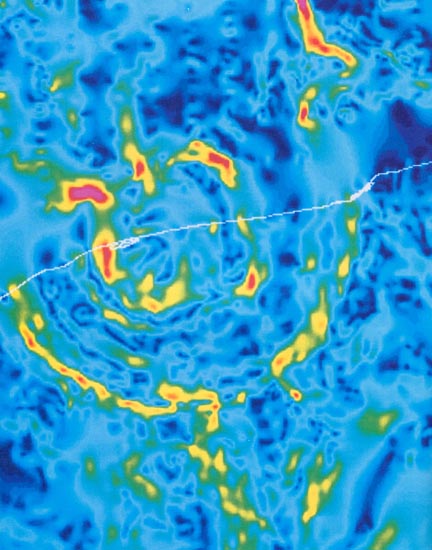
The remians of the impact site in Mexico as seen by satellite imagery.
Example: the layer that marks the extinction of dinosaurs has characteristics of an asteroid impact.
Ways of Measuring Absolute Time
Tree rings- every year a tree grows a new ring. When the tree dies, the rings can be counted and events such as forest fires can be dated. (Evidence of the same fire may be seen as a layer of ash in the rocks to correlate a rock layer with the tree rings). Tree rings can be used to date events up to 3000 years ago.

Ways of Measuring Absolute Time
Varves- Layers in sedimentary rock that were formed in a lake. Some lakes have seasonal deposits (ex.. sand in the spring from high rain volume and silt deposited in the winter when the top is covered in ice and water flow stops.)

Crossbedded varves in loose glacial deposits. Photo by Phil Medina
Radioactive Dating
Key points of Radioactive Decay:
- One "half-life" of time has passed when exactly half of the element remains.
- Half lives differ from element to element.
- When they fall apart they form a different material.
- A ratio between the original material (parent material) and the decay product (daughter material) can be used to determine how many half-lives the material has undergone.
- The radioisotope used should have a half - life that is around the age of the object being dated.
- Ex: 14C is used for objects thousands of years old
- 14C can be used to date back to around 50,000 year
Some notes on 14C (Carbon-14):
- 14C has a half-life of 5,700 years old.
- It is only used to date organic remains.
- One setback of using 14C is that levels in the atmosphere depend on solar strength and have not been consistent in history resulting in inaccuracies in dating. Levels are calibrated using other radioisotopes which do not have such variations.
The radioisotope used should have a half - life that is around the age of the object being dated.
Ex: 14C is used for objects thousands of years old.
14C is only used for organic material
Evolution
Evolution is the changing pattern of life forms.
Natural Selection - First proposed by Charles Darwin - life forms best adapted to survive will continue to reproduce.
Life begins as single cells about 3.5 Billion Years ago.
Humans arrived about 1.6 Million Years ago.
Most of the life that has evolved (>99.9%) has become extinct.
Ex.: Cro-Magnon Man is extinct because they evolved into modern Homo-sapiens.
Mass Extinctions
There have been several mass extinctions that have caused widespread endings to species.
Ex.:
65 MYA dinosaurs became extinct.
245 MYA >90% of all life on the planet became extinct.
Today Approximately 10 species per day go extinct because of human involvement.
Mass extinctions may have been caused by environmental stresses
|

